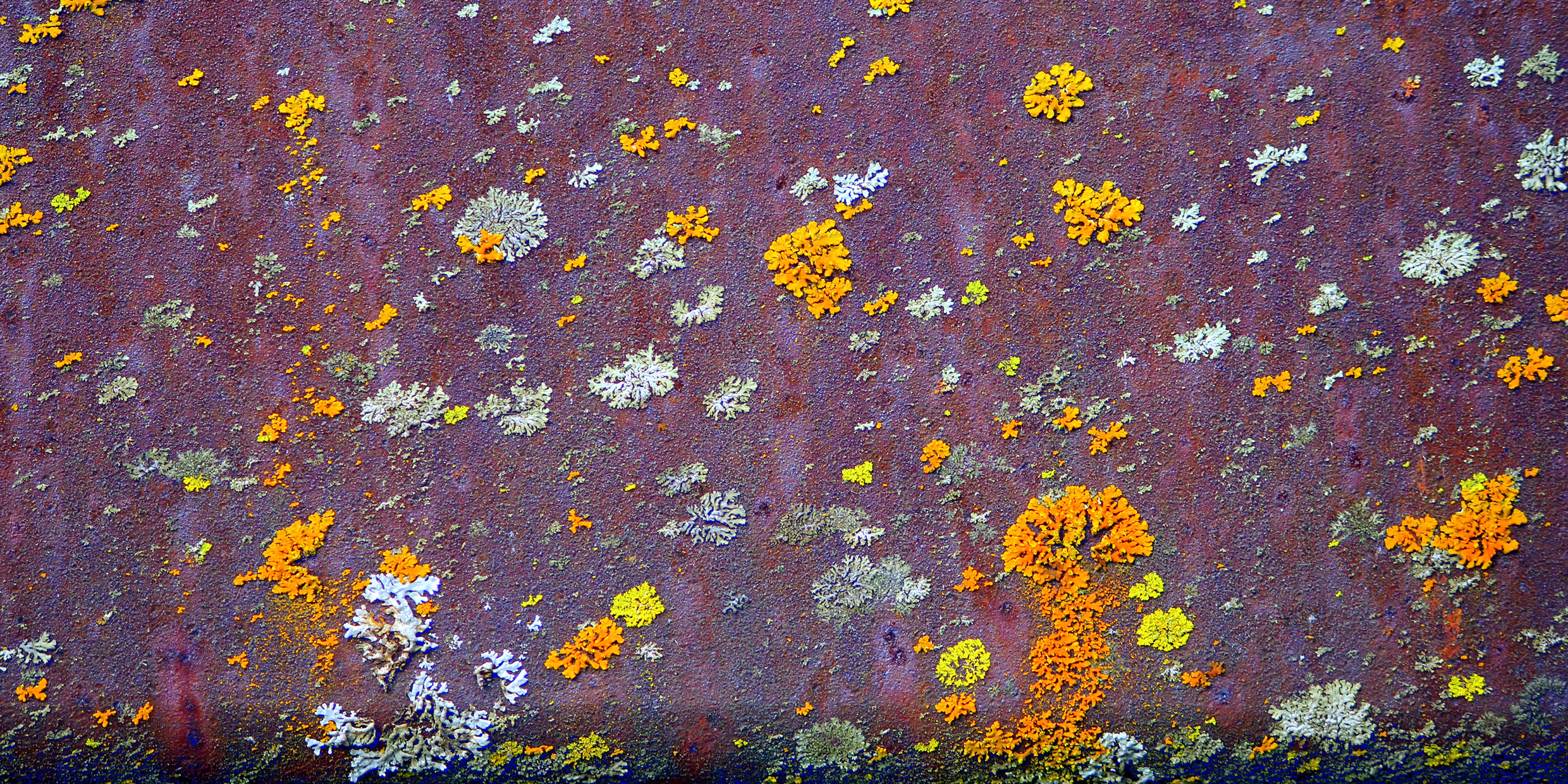Originally published 23 April 2002
“There is a low mist in the woods. It is a good day to study lichens,” wrote Henry David Thoreau in his journal on the last day of 1851. To tell the truth, any day is a good day to study lichens, as Thoreau would have acknowledged. “I could study a single piece of bark for hours,” he wrote elsewhere in his journal. He meant, of course, a piece of bark covered with lichens.
Winter or summer, as other creatures come and go, lichens endure, in their rainbow of colors, their multiplicity of forms, their prodigious capacity to thrive in the least hospitable environments. They colonize gravelly ground, bare rock, concrete walls, tombstones, and nooks and crannies of the planet snubbed by every other creature.
Lichens are nature’s graffiti artists, painting every exposed surface with swaths of color.
Some of the most engaging lichens in our area require getting down on hands and knees: British soldiers, pixie cups, reindeer moss (which is not a moss at all), and pink ground lichen (bubble-gum lichen, my students call it, nailing the color) — tiny forests that invite exploration. A magnifying glass helps.
To look for lichens is to “go gnawing the rails and rocks,” wrote Thoreau. The person who studies lichens grows fat where others starve, he said — like the lichens themselves.
Unfortunately, there are few guidebooks to help us as we go a‑gnawing. My college library has several shelves of books on algae, and more shelves on fungi, but only a few volumes on the combinations of algae and fungi known as lichens. How fortunate we are then to have the magnificent new Lichens of North America by Irwin Brodo, Sylvia Sharnoff, and Stephen Sharnoff (Yale University Press, 2001), which has got to be one of the most beautiful nature guides ever published.
I’m not suggesting that you rush out and buy the book. For one thing, it costs $70 (although worth every penny). For another, at almost 9 pounds you are not likely to carry it in your backpack. Forget the rails and rocks: This is a book to savor in a comfortable chair, preferably with the book resting on a sturdy table.
And what makes the book so savory are the color photographs, more than 800 of them, almost all taken by the Sharnoffs. Who would guess that lowly lichens could be so beautiful? Perhaps only beetles display such a range of colors, and no other class of living things has such a variety of forms.
A lichen is usually referred to as a symbiosis of an alga and a fungus, which means that the two live together for mutual benefit. The alga makes nutrients with sunlight, photosynthesis, which a fungus cannot do. The fungus provides the alga with a steady water supply, protection from excess light, and a chance to live in habitats — dry rocks, exposed tree bark — where it could not survive on its own.
But all things considered, it would appear to be the fungus that gets most out of the collaboration. Lichenologist Trevor Goward goes so far as to say that lichens are “fungi that have discovered agriculture.”
What he means, I suppose, is that lichen fungi have domesticated algae the way we domesticated corn and cattle. After all, humans could not survive without the nutrients produced by plants, or the flesh and fluids of animals that eat plants.
Lichen fungi feed on the algae that they have enticed or trapped into collaboration. They suck nutrients from the algae, sometimes killing them. It is only because alga cells reproduce faster than they are consumed that a lichen can exist at all; otherwise the lichen would “eat itself alive.”
If the alga and fungus components of a lichen are cultured separately, they appear pretty much as monochrome goos, lacking the hues and form of the original lichen. It’s the fungus’s genes that determine the structure of the lichen. The alga somehow turns its partner’s genes on or off, but when if comes to the wonderful lichen shapes you see on rock or rail, it’s the fungus that’s in charge.
As appreciators of beauty, we humans also gain from the lichen symbiosis. The breathtaking photographs in Lichens of North America raise the question: Why the beautiful colors? The hues of flowers attract insects for pollination; the colors of birds attract mates. It is less clear why lichens display such gaudy colors, but, on a misty morning in the woods, those little flecks of pigment — British-soldier red, bubble-gum pink, bright yellows and oranges — are welcome.
Thoreau even took home a moral lesson from his lichenizing: “It fits a man to deal with the barrenest and rockiest experience,” he wrote. He might have added: Such is the resourcefulness of all life.



